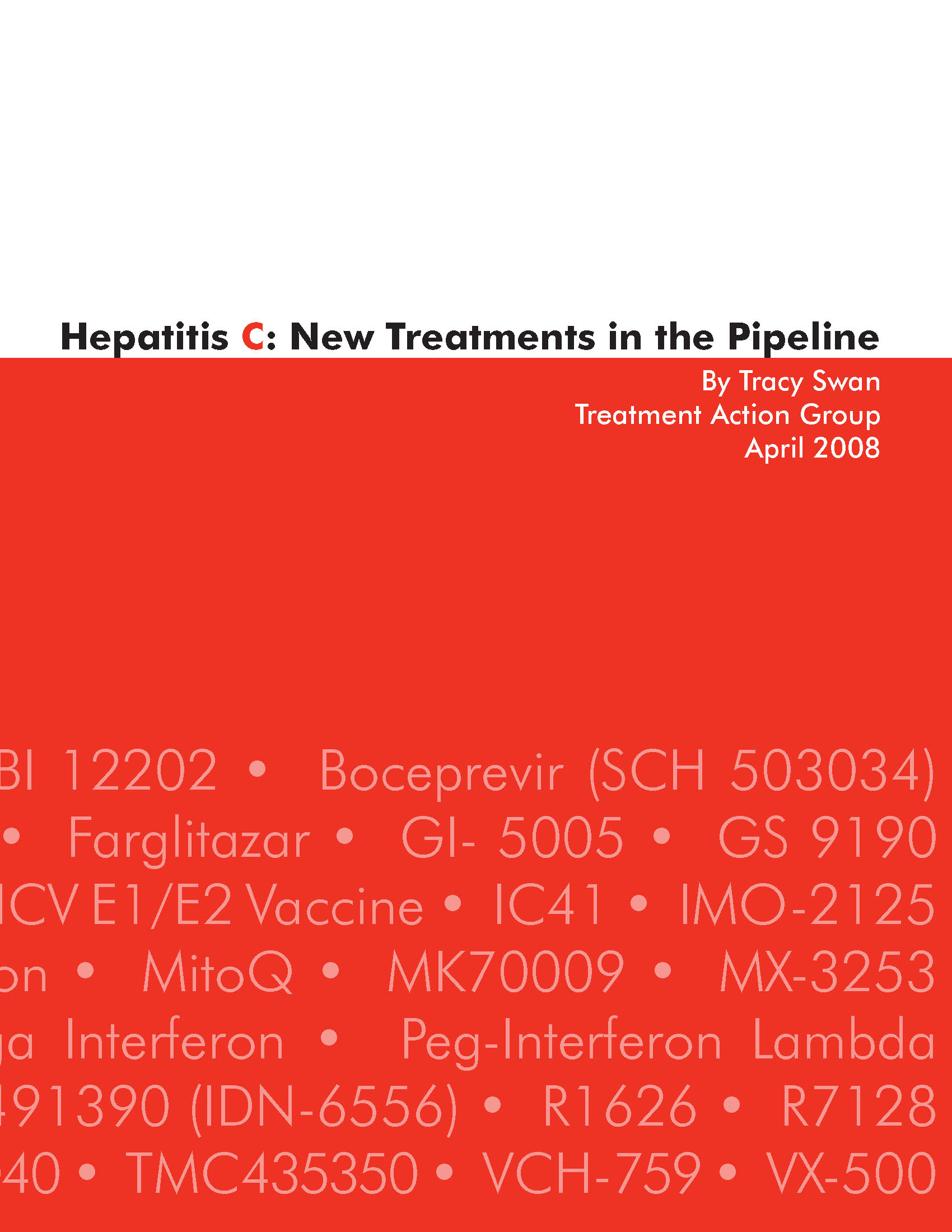By Tracy Swan
April 2008
From the Introduction
Hepatitis C virus (HCV) is a serious global health problem. According to the World Health Organization (WHO), which describes HCV as a “viral time bomb,” 130 million people have chronic hepatitis C, and 3 to 4 million more become infected each year (WHO 2007). If untreated, or unresponsive to treatment, chronic HCV leads to cirrhosis in 20–30% of people. Each year, ~4% of people with hepatitis C-associated cirrhosis develop liver cancer, and ~6% will experience liver failure (Di Bisceglie 2000). WHO estimates that up to 75% of liver cancer and ~65% of liver transplants occurring in the developed world are attributable to chronic HCV infection (WHO 2007).
The current standard of care for HCV, pegylated interferon and ribavirin, is not effective for approximately half of those who undergo it, and the side effects are often debilitating.
The need for new therapies for hepatitis C virus is more urgent than ever, particularly for a growing population of treatment-experienced people with serious liver damage. Results from HALT-C and SLAM-C—two interferon maintenance trials for people with advanced liver damage—were an unexpected disappointment. Both reported that maintenance therapy did not reduce fibrosis progression, hepatic decompensation, or liver-related mortality, leaving no stopgap until new drugs are available (Di Bisceglie 2007; Sherman 2008). Without advances in, and broader access to, HCV treatment, liver-related mortality is expected to rise sharply in the coming years (Davis 2003).

